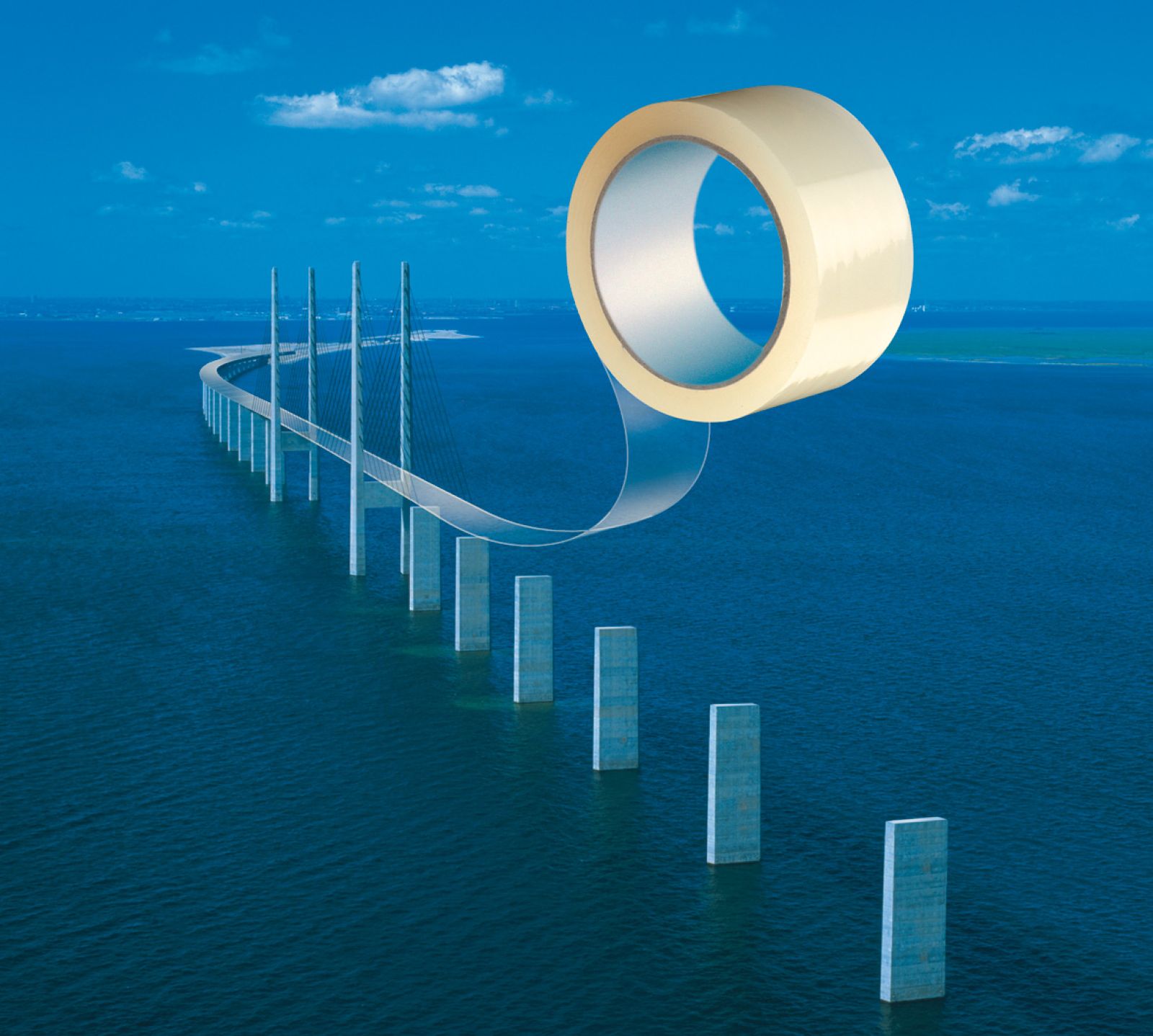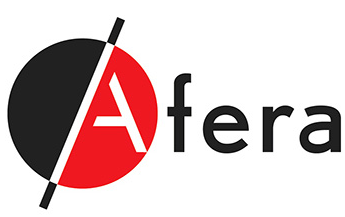
Afera Tape College editorial 2014

Editorial: 6th Afera Tape College 2014
by Dr. Michael Gerstenberger
For the sixth time, the Afera Tape College summoned some hundred participants from April 7 to 9, 2014, to its traditional venue in Brussels. In the following, an overview will be presented summarising a selection of presentations, the choice of which, as usual, by no means reflects any undue preferences.
T. Christ of BASF (Germany) lectured about his topic of “Coating Technology for Water Based Adhesives”. A typical formulation was presented containing some 80 parts of polymer dispersion and 20 parts of tackifier, adding minor quantities (1 part or below) of wetting agent, thickener, and defoamer. Main criteria for “good” running in the respective application are given by the viscosity of the formulation, good wetting of the carrier web, a homogeneous coating (i.e., no “fish eyes”, pinholes, cratering), low foaming, easy drying, and no film shrinkage. Various coating techniques are in use, such as employment of comma bar, Mayer bar, reverse roll (nip and pan fed), gravure processes (including reverse and vario gravure), slot die, and curtain coating. Different coating methods require adaptation of adhesive viscosity: Vario gravure, for instance, is the process of choice low viscosity, employment of comma bar in case of high values.
Balancing shear against tack in a PSA composition is one of the most prominent and ubiquitary jobs of a formulation technologist. I. Uhl of Dow Chemical (France) elaborated on this topic with respect to the acrylic-based species in her contribution “An Introduction to Acrylic Pressure Sensitive Adhesives”. PSAs constitute a class of adhesives endowed with particular visco-elastic properties exhibiting flow in order to form a bond to the substrate (adhesion) as well as the opposite, resistance to flow, for providing strong bonds (cohesion). Both properties are antagonists to a certain extent, with softer monomers and shorter molecular chains favouring the first, harder moieties and longer chains as well as crosslink promote the latter. Acrylic polymers may boast with an abundance of properties that make them virtually ideal candidates for formulating PSAs, among these there are excellent ageing, availability in solvent, aqueous emulsion, and hot-melt manifestation, sometimes exhibiting inherent PSA behaviour (without adding, e.g., tackifying resins), low colour, high resistance against water, plasticizers, etc., and applicability over a wide temperature range.
Modifying Mattisse´s well-known paradox (“Ceci nest pas un pipe”), E. Pass of Nitto (Belgium) impressively demonstrated the broad versatility of industrial PSA tapes: “Ceci nest pas un Tape...but a multi-functional sheet”. Comparison between “traditional” mechanical joining methods (welding, riveting,...) tapes indeed do offer considerable advantages: automated application, no thickness limitation, and nowadays the fact that traditional limits of tape joints, i.e., lack of disassembly and recycling meanwhile have been overcome due to true technological breakthrough. Hence, modern application examples such as smart phone assembly and disassembly in the recycling process, bio-based wound healing tapes, and body signal recording devices become possible through expansion of PSA tapes´ functionality.
S. Zoellner of tesa (Germany) presented the state of the art of the most important post-curing technologies, i.e., UV and EB irradiation, the latter based on electrons as charged particles whereas the first making use of photons like visible light, however, exhibiting lower wavelength and, hence, higher energy. Nevertheless, energy content of UV photons is much lower than that of EB electrons by factors ranging between 20 and 100. Consequently, UV radiation may cause cleavage of chemical bonds, e.g., those between two carbon atoms (and are employed to do so in initiating polymerisation and cross-linking), whereas EB radiation interacts with any matter and no special absorbers such as photoiniators prove necessary. Also pigments and fillers to a lesser extent reduce EB radiation´s penetration depth only depending on such materials´ density. All in all, radiation curing might boast a number of advantages, such as fast and efficient onset of chemical reactions, no extensive heat treatment necessary, applicability for 100% solid systems, and good control of adhesion and cohesion.
On the “Selection of the Right Release Liner” lectured J. Pomorin of Evonik Industries (Germany). World market of release liner amounts to 38 billion m², 15% of which are attributed to filmic types, the rest to paper based material. A number of release systems are common, among these are such materials like carbamates, chromium polymer complexes, fluoropolymer resins, some modified varnishes, the lion´s share being covered by silicone based systems. Since the 1950s, lots of distance has been covered starting from solvent-based thermally curing systems running through such development steps like EB and UV free radical and UV cationic curing species towards today´s “true” one-component materials. Modern UV-curing silicones allow for siliconisation of extremely thin plastic film with almost no limitations regarding the type of substrate, are free of catalysts and poisoning photoinitiators, and require only low UV dose, developing only little heat. Future evolution trajectories might lead towards siliconisation of unusual substrates and surfaces (PVC, PS, thermal papers, ..) and special properties silicone coatings through adding, e.g., coloured pigments, matting agents, anchorage additives, etc.
G.-J. van Ruler of Eastman (Netherlands) presented an extensive overview of “Polymers – Adhesive Raw Materials”. Starting from a compilation of well-known backbone polymers such as natural rubber, butyl rubber, SBR, styrene block copolymers, and a deeper look into their chemistry, the author moved forward to the broad field of tackifying resins, their properties (softening point, colour, molecular weight distribution, cloud point) and their respective determination and measurement methods. After presenting details about the chemistry of the main classes of tackifiers (rosins, C5, C9) and resin vs. polymer compatibility, the author dug deep into formulation guidelines and “the art of formulating” ready-made adhesives. Dynamic Mechanical Analysis provides a powerful tool for experimental proof of the formulation ingredients´ compatibility.
PSA formulation applied onto a polyolefine foam substrate gives access to some fascinating fields of tape applications, about which L. Berger of Sekisui Alveo (Switzerland) provided deeper insight: “Foams for Technical Tape Applications”. Products are employed for such diverse end-uses as window and door sealing, thermal decoupling for preservation of energy (heat), glass protection during transport, fixation of car outer and inner parts (emblems, body side mouldings, mirrors) for drug delivery systems, and for mounting and sealing of photovoltaic elements. Main functions of the PE foam carrier are sealing against humidity and dust, making two irregular surfaces stick together (conformability), and improving soft touch and comfort (haptics, i.e., surface feel). Besides the well-known adhesive failures (adhesion and cohesion), failure of the foam cohesion (inner break of the foam layer) must be avoided in order to guarantee proper function of the composite. Hence, overall tape performance not only turns out a result of the PSA selection but is heavily dependent upon choosing the most appropriate foam. Preciseness of the production process and proper treatment of foam surface turn out two crucial prerequisites of foam tape manufacturing.
Afera Tape College 2014 – it once again successfully proved true the words of C. Küsters, Afera Technical Committee Chairman: “...A truly dynamic learning opportunity yielding positive and lasting benefit to every participant.”
LION CONSULT (MRCG) May 2014
The Concept
In order to provide its members with the opportunity to brush up on basic industry knowledge by ‘going to school’ with the experts, Afera created this biennial opportunity for all those affiliated with the tape business to explore the basics of design, manufacture, application and testing with tape industry authorities. Class topics included the fundamentals of tape products, coating technology for water-based, hot melt and acrylic PSAs, tape backings, release papers and liners, physical testing, utilising EB- and UV-irradiation, surface treatment methods and rheology of PSAs.
Some Quotes of Lecturers and Participants:
....75% of customer complaints had to do not with the tape itself but with improper application. Tim Jensen, Jensen & Associates (USA)
This is my first Tape College and my second technical event with Afera. I have given several presentations on the advancements of new adhesives. My interest here today is to learn more about technological advancements and the latest art of designing modern adhesives. Christoph Küsters, Senior Technical Manager, 3M Deutschland GmbH, Industrial Adhesives & Tapes Laboratory Europe (D)
What you often find at international conferences is that the subject matter of presentations tends to be rather superficial in order to suit a wider audience. This is not the case with Afera’s presentations, which delve into deep detail. In this respect, Afera offers a substantial, high-level programme.” Marco Martinez, Marketing Communications Director, Release & Label Papers, Advanced Nonwovens, Home & Personal Nonwovens, Ahlstrom Turin S.p.A. (I)
You have been talking about chemical molecules. I will talk about political molecules…. Registration under REACH is not just a technical issue. It’s a business issue. Leon Rodenburg, Eastman Chemical B.V. (NL)
I have only been in the tape business for a short time, so I found the Tape College useful in providing a brief overview of this sector. I appreciated the mixture of general and more specialised presentations.... I am very convinced of the quality of the TC event and plan to attend the next one. Dr. Marco Abendroth, Product Development, ORAFOL Europe GmbH (D)
FORMER TAPE COLLEGES
Previous colleges took place in 2004, 2005, 2007 2010 and 2012.
Reports cannot be published due to repetition of the content but nevertheless in 2010 some participants where interviewed during the Afera Tape College. This report can be read in full >


